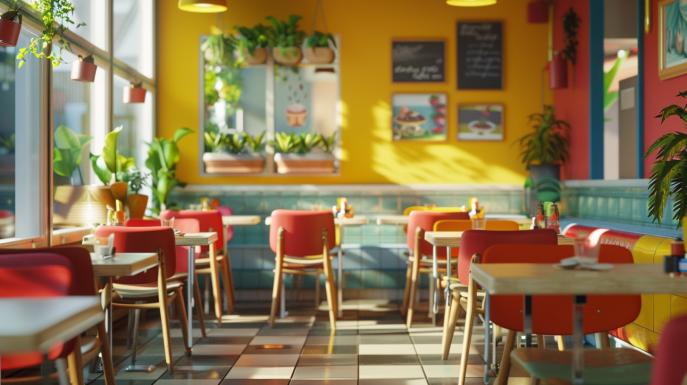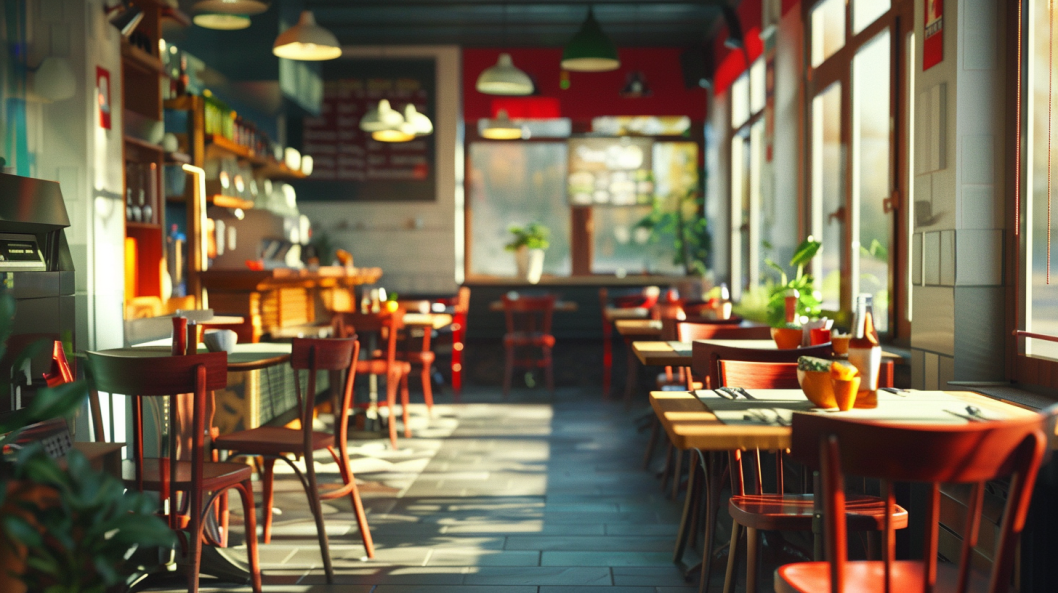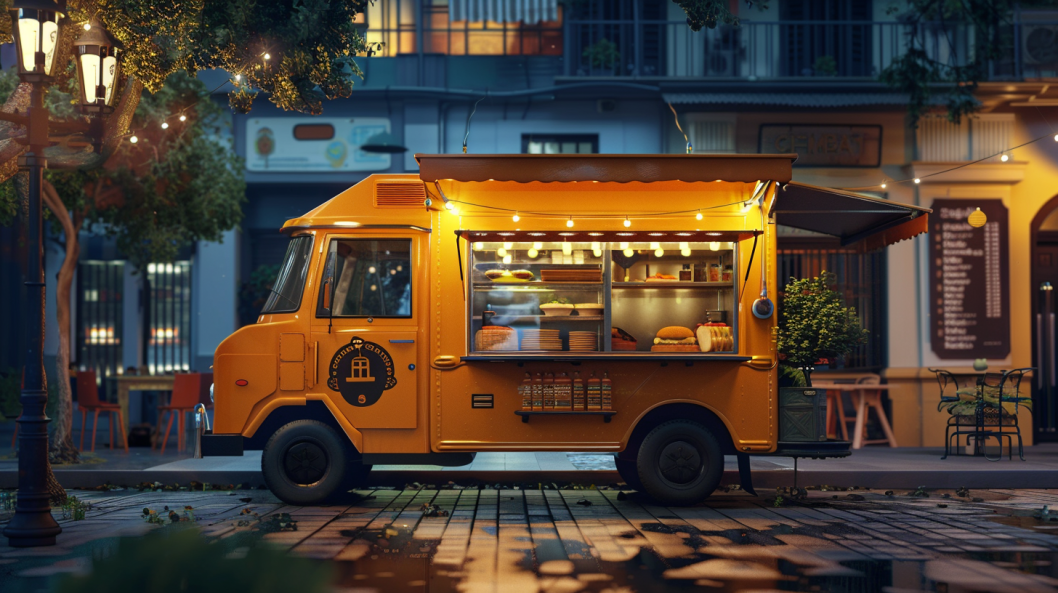It can be tough defining exactly which category some restaurants reside in because of their unique decor or exotic food. We've come up with a list of the most common restaurant types to help you understand the qualities that make up each type. Hopefully, this helps you in deciding which type of restaurant is right for you as a business owner.
Fast-Food Restaurants
Fast food restaurants are the most familiar restaurant type in the 21st century. With a rising demand for quick service, the idea of a fast-food restaurant first came about in the early 1920s.
Burger King, one of the leading fast-food restaurant chains in the United States, produced a mission statement to “…offer reasonably priced quality food, served quickly, in attractive, clean surroundings.”. They emphasize on one collective goal within the fast-food restaurant franchise: cheap food and quick service.
To achieve this, the food prepared at these types of restaurants is usually preheated or precooked. The food prepared in these kitchens contains highly processed foods with high sodium, high trans, and saturated fats. The qualities of fast-food restaurants are as follows:
- Counter or drive-through service
- Processed foods
- The use of disposable items
- Casual atmosphere
- Uses bright colors such as red and yellow to arouse appetite
- The seating and mood are uncomfortable, initiating that customers enter and exit quickly.
- Typically apart of big business chains such as McDonald’s, Arby's, Burger King, Chick-fil-a, etc.
Fast Casual Restaurants

Fast Casual restaurants, often labeled as quick-service restaurants, do not offer table-service but instead something much more appealing to those living fast-paced lives. With a made-to-order restaurant concept, the idea of fast-casual restaurants lies between fast food and casual dining. The ordering process consists of a build-your-own meal that can be served as either takeout or dine in.
The pricing at a fast-casual restaurant also lies between fast-food and casual dining prices. It typically has more seating than fast food joints with a more comfortable atmosphere as well. These types of restaurants target professional Millennials who have busy lifestyles yet still want quality food at moderate prices. The defining qualities of fast-casual restaurants are as follows:
- Serve people looking for a quick bite
- Healthier than fast food
- More affordable than casual restaurants
- Focused on delivering a healthy alternative to fast food
- Has more seating than fast food joints
Casual Dining Restaurants
Casual Dining restaurants are often moderately priced, offer table service, and present the consumer with a laid back, comfortable ambiance. These restaurants prepare meals with higher-quality ingredients compared to fast-food restaurants.
Although they were once the top of the restaurant chain, the concept of casual dining is declining because of younger audiences, who are evolving the restaurant industry into a more fast-casual dining experience. The defining qualities of fast-casual restaurants are as follows:
- Moderately-priced items
- Table Service
- Unique Decor
- Laidback atmosphere
- Larger Portion sizes
- Often serve alcohol
Fine Dining Restaurants

Being the most expensive restaurant type because of its high-end decor, formal atmosphere, and exotic dishes, fine dining restaurants are typically only visited on special occasions such as birthdays or anniversaries. Fine diners expect a formal dress code from their staff as well as their customers.
These types of restaurants use only the freshest of ingredients, most of which are locally grown. They offer high-end booze with exotic or unconventional items on the menu. The defining qualities of a fine dining restaurant are as follows:
- Formal dress code
- Fine dining etiquette
- High-end decor
- Formal atmosphere
- Exotic menu items
- Staff members follow strict etiquette for taking and serving meals
- Uses the freshest ingredients, mostly local
- High-end booze
Family Style Restaurants
Family Style dining offers table service, a relaxed atmosphere, and sharable platters. It is often confused with casual dining, but the differing quality is sharable platters. These are plates that can be passed around, allowing everybody to eat the same foods.
The definition of a family-style restaurant is not particularly specific. Many consider family-style dining to lie anywhere between fast food and fine dining. Below are a few qualities that define this restaurant type.
- Table service
- Sharable platters
- Relaxed, casual atmosphere, although some boast upscale styles
- Large serving sizes
Buffet Restaurants
In buffet-style restaurants, guests serve themselves from a wide variety of dishes laid out on a bar or a set of tables. Commonly seen at catered events, this all-you-can-eat restaurant style has taken over the catering community. Customers pay one upfront price after which they serve themselves.
The defining qualities of a buffet-style restaurant are as follows.
- "all you can eat"
- Buffets offer a selection of food at a fixed price
- Casual decor
- Includes self-serving and table service
- One of the oldest restaurant types
Although buffet restaurants have been around since the 16th century, the industry is losing its flame.
Cafe or Bistros
Cafe's and Bistros are the most laid back restaurant type that aims to create a comfortable, work-friendly atmosphere. These restaurants typically serve coffee, tea, espresso, pastries, and sandwiches, although some bistros serve entire meals. In these types of restaurants, you seat and serve yourself.
Cafe's are mostly known for serving coffee, tea, and espresso with indoor and outdoor seating. As the idea of self-employment has become more appealing to younger generations, a coworking restaurant environment is something cafes take advantage of. They provide a space available for customers to sit and enjoy a coffee whilst working, studying, or conducting job interviews.
Bistros are very similar to the cafe concept, but they serve entire meals, such as soups or pasta, instead of limiting to eateries. Some feature more distinctive plates that vary from bistro to bistro.
- Aimed to create a comfortable, leisurely atmosphere
- "Coworking space"
- Does not offer table service
- Serves coffee, tea, espresso, pastries and sandwiches
- Most offer outdoor seating
- Some bistros serve entire meals
Food Trucks

Food trucks are the most popular in big cities, sporting events, or fairs and are often seasonal restaurants. Because of their low startup and overhead costs, many aspiring restaurant owners start a food truck restaurant instead of a standard restaurant. They are a very easy way to open a restaurant and require less staff to operate.
The food prepared at food trucks is preheated or precooked for easy preparation as food trucks don't have much real estate to give up for cooking stations or bars to prepare food on. Most food trucks serve specific things, such as hotdogs, burgers, burritos, ice cream, smoothies, or slushies.
- Low cost, low overhead
- Easy way to open a restaurant
- Mobility allows food trucks to go where the customers are
- Requires less staff
- Premade food
- Social media advertising
As the industry grows, restaurants continue to evolve and adapt to current and upcoming trends. This is prevalent with the rise of fast-casual restaurants. If you decide to start your own restaurant, consider a unique style, modernized decor, and signature food to appeal to younger audiences.
